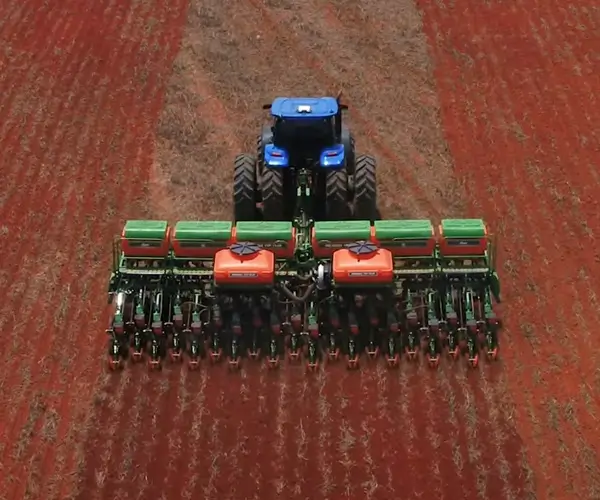part 1:
Unraveling the Basics: What Are Stepper and Servo Motors?
When it comes to controlling motion in machines, robotics, or automation systems, selecting the right motor type is a fundamental decision that influences performance, accuracy, cost, and complexity. Among the most prominent options are stepper motors and servo motors—each engineered for specific applications, each with distinct strengths and limitations.

Stepper Motors: Think of stepper motors as the "digital" of the motor world. They move in precise, discrete steps, making them excellent for applications requiring accurate position control without the need for complex sensors or feedback systems. Each electrical pulse fed into a stepper motor advances the shaft by a fixed angle—commonly 1.8°, which equates to 200 steps per revolution—though this can vary. They are straightforward to control and cost-effective, making them popular in 3D printers, CNC machines, and small robotics.
Servo Motors: In contrast, servo motors are more like the "analog" performers—designed for smooth, continuous, and highly precise movement. They operate with a feedback loop that constantly monitors position, velocity, and sometimes torque, adjusting motor output to match the desired command. This feedback system enables servo motors to achieve high accuracy in dynamic conditions, making them invaluable in sophisticated robotic arms, CNC machining, and industrial automation where precision and speed are paramount.
Application Spectrum: Where Each Motor Excels
Stepper motor applications shine in scenarios where simplicity, affordability, and adequate precision suffice. They are favorites where the environment is controlled, and high-frequency, rapid motion updates aren't necessary. Examples include:
3D Printers: Stepper motors facilitate precise filament movement and layer deposition, enabling detailed and accurate 3D modeling. XY and XYZ Tables: They position print heads and tool tips with accuracy and repeatability, essential in manufacturing. Small Robotic Platforms: For beginner robots or projects that don't demand ultra-high precision, stepper motors provide a space-efficient, low-cost solution. Camera Positioning: Automated camera rigs utilize steppers for repeatable, incremental adjustment.
Servo motor applications, however, are characterized by their need for high performance, rapid response, and adaptability. They are suited for:
Industrial Robots: For tasks requiring dynamic movement, such as pick-and-place, assembly, or welding. CNC Machinery: Enable intricate cuts with high precision at various speeds. Aerospace and Defense: Where precision and reliability are critical under demanding conditions. Medical Equipment: For example, in surgical robots where delicate, accurate movement is essential. Automated Vehicles: For steering, braking, and throttle control requiring smooth, responsive operation.
The Control: Simplicity Meets Complexity
Control systems are pivotal in motor applications. Stepper motors, being open-loop devices, are generally easier to implement—simply send pulses and count steps. This simplicity reduces costs and design complexity, but it comes with drawbacks. Under heavy load or sudden changes, stepper motors can lose steps, resulting in positional inaccuracies unless additional sensors or homing mechanisms are employed.
Servo motors, on the other hand, operate through closed-loop control. They utilize encoders or resolvers that constantly feed information back to the controller, allowing for real-time adjustments. This yields high accuracy, smooth motion, and the ability to handle complex, dynamic environments. However, servo systems are more sophisticated—they require more advanced control algorithms, feedback devices, and typically cost more.
Performance Attributes: Precision, Speed, and Torque
Understanding the performance characteristics of both motors is crucial when matching them to specific applications:
Precision:
Stepper motors are inherently precise due to their step-wise operation. However, their maximum accuracy is limited by step size and mechanical factors.
Servo motors provide superior accuracy through feedback and fine control, especially at high speeds and under varying loads.
Speed:
Stepper motors are generally slower, with maximum speeds depending on design and control strategies.
Servo motors excel at high-speed operations, with better acceleration and deceleration capabilities.
Torque:
Stepper motors deliver high torque at low speeds but can torque out at high speeds.
Servo motors can produce consistent torque across a broad speed range, making them suitable for heavy-duty applications.
Cost and Complexity Considerations
Budget constraints often influence machinery design choices:
Stepper motors are more affordable both in hardware and control electronics. They are ideal for small to medium applications where simplicity and cost-effectiveness are key. Servo motors tend to carry higher upfront costs and require more sophisticated controllers and feedback devices, but their performance advantages often justify the investment in demanding applications.
In summary, understanding the core differences in mechanics, control, and operational nuances helps in demonstrating why certain applications favor one motor type over another. The next section will delve into real-world case studies and considerations for selecting the right motor based on specific project requirements.
Established in 2005, Kpower has been dedicated to a professional compact motion unit manufacturer, headquartered in Dongguan, Guangdong Province, China.




































